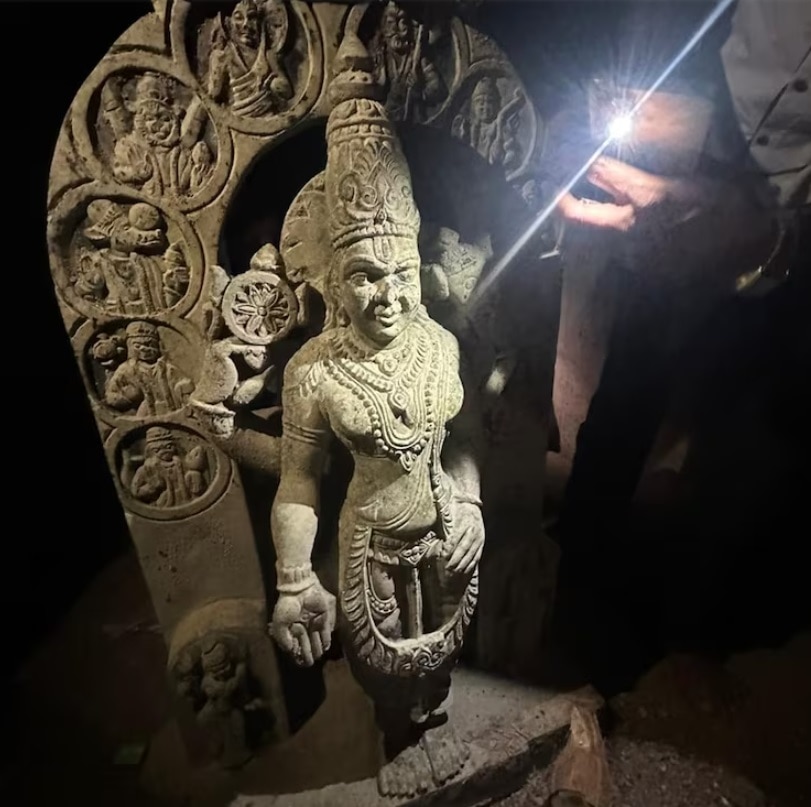
By clicking “Accept All Cookies”, you agree to the storing of cookies on your device to enhance site navigation, analyze site usage, and assist in our marketing efforts Cookies Policy.

An ancient statue of Lord Vishnu featuring all ten incarnations, or ‘dashavatara,’ was discovered near the Krishna river in the Raichur district of Karnataka. This remarkable idol bears striking similarities to the recently consecrated statue of Ram Lalla in the newly constructed Ram Temple in Ayodhya. The statue of Lord Vishnu is a significant find as it showcases all ten avatars of Lord Vishnu, including Matsya (the fish), Kurma (the tortoise), Varaha (the boar), Narasimha (the half-man, half-lion), Vamana (the dwarf), Parashurama (the warrior with an axe), Rama (the prince of Ayodhya), Krishna (the charioteer of Arjuna), Buddha (the enlightened one), and Kalki (the future avatar).
The idol is made of a rare black stone and is believed to be several centuries old. Its discovery near the Krishna river adds to the historical significance of the find, as this river has been associated with ancient civilizations and religious practices for centuries.

Along with the statue of Lord Vishnu, an ancient Shivalinga was also found. This discovery adds to the religious and archaeological importance of the site.
Speaking about the Vishnu idol, Dr Padmaja Desai, a lecturer in ancient history and archaeology at Raichur University, told PTI, “This idol must have adored the sanctum sanctorum of a temple and must have been dropped in the river at the time of possible destruction of the temple.”
She went on to describe its features and shared that Vishnu is depicted as having four arms, with his two upper hands holding the ‘shankha’ and ‘chakra’. The two lower hands are placed in the position of granting boons (‘kati hasta’ and ‘varada hasta’).

As per PTI, the lecturer said that the idol bore a resemblance to Venkateshwara as described in the Vedas. However, this idol lacks Garuda, a characteristic typically seen in Vishnu idols. Rather, a pair of women holding fans is seen. Since Vishnu is fond of decoration, this idol showing a smiling Vishnu is adorned with garlands and ornaments.
Archaeologists believe that the idol belonged to the 11th or 12th Century AD.
For breaking news and live news updates, like us on Facebook or follow us on Twitter and Instagram. Read more on Latest Karnataka News on India.com.